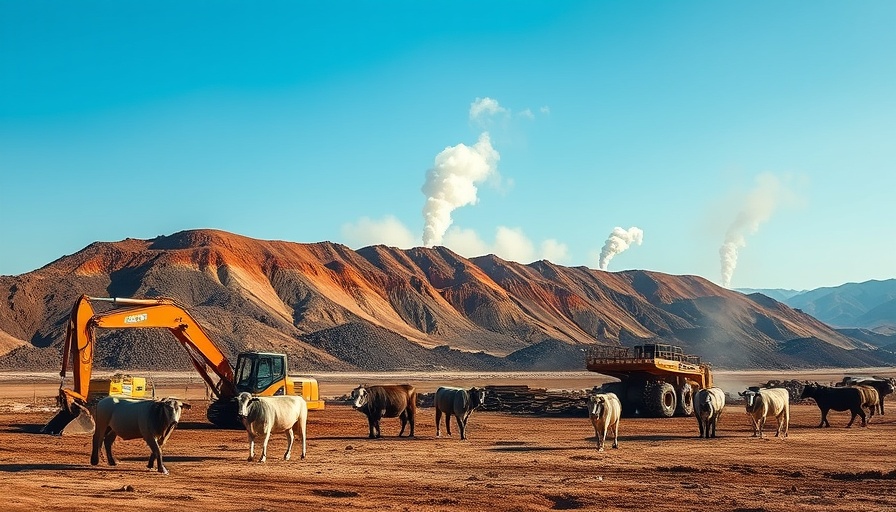
The Coming Copper Crunch: What You Need to Know
As the world moves towards a greener future, the increasing demand for renewable energy has led to alarming predictions from the International Energy Agency (IEA): a potential shortfall of copper could become a significant issue within the next decade. With copper recognized as a critical mineral for renewable technologies—being integral to solar panels, wind turbines, and electric vehicles—the implications of a supply shortage are far-reaching.
Understanding the Factors Behind the Shortage
The IEA's Global Critical Minerals Outlook 2025 underscores a projected 30% shortfall in copper supply by 2035, a troubling forecast considering that demand is expected to grow by 1 million metric tons each year. Several factors contribute to this imminent crisis:
- Declining ore grades leading to lower yields from mines.
- Increasing production costs that can stymie new mining projects.
- Aging infrastructure in existing mining operations.
- Limited exploration activities resulting in fewer new discoveries.
This supply crunch is compounded by the issue of market concentration, with just a handful of companies controlling a significant portion of copper production. Such a lack of diversification increases the vulnerability of the supply chain to various risks.
The Green Energy Transition and Its Implications
As demand for renewable technologies skyrockets, the pressure on copper supply will intensify. With many insights aligning with the IEA's findings, experts emphasize the urgent need for strategic investments and policies that promote sustainable mining practices and alternative materials.
For context, while lithium—a similarly essential mineral—has greater opportunities for new projects, the report indicates that securing copper resources will require innovative solutions and a commitment to diversify sourcing.
Lessons from the Past: Historical Context and Current Trends
Historically, the mining industry has faced numerous challenges tied to environmental regulations, community opposition, and fluctuating market conditions. Learning from these challenges offers critical insights into how to manage potential shortages going forward. Investments in technology, particularly in recycling and alternative energy solutions, are paramount.
What Can Be Done? Actionable Insights
The IEA's recommendations are crucial for stakeholders in the renewable energy sector. Here are a few actionable insights that can mitigate the forecasted risks:
- Investment in Recycling: Enhancing recycling technology can significantly reduce the pressure on fresh mining supplies.
- Government Incentives: Policymakers should foster partnerships and provide incentives for sustainable mining practices.
- Alternative Materials Research: Investing in research for substitutes that can replace copper in certain applications could alleviate potential shortages.
Final Thoughts: Why This Matters to You
As consumers and citizens, understanding the implications of copper shortages affects not only the cost of renewable technologies but also the broader goals of achieving sustainable energy independence. By advocating for better policy decisions and supporting innovative solutions in the tech and energy sectors, individuals can play a role in addressing this looming challenge.
In conclusion, while shortfalls are not guaranteed, proactive measures are necessary to avoid the fallout from a disrupted copper supply chain. Together, we can move towards a sustainable future with greater resilience against market fluctuations.
 Add Row
Add Row  Add
Add 




Write A Comment